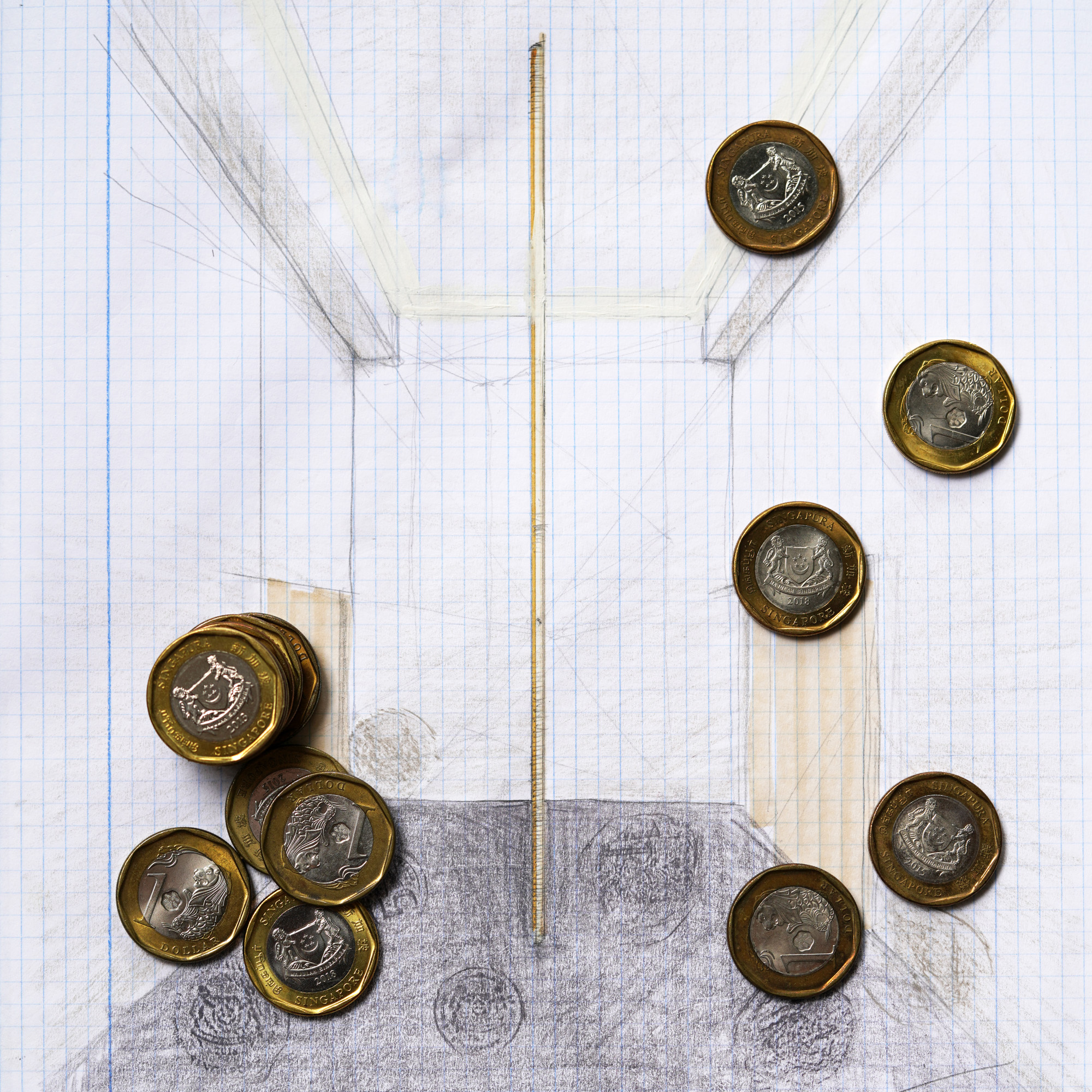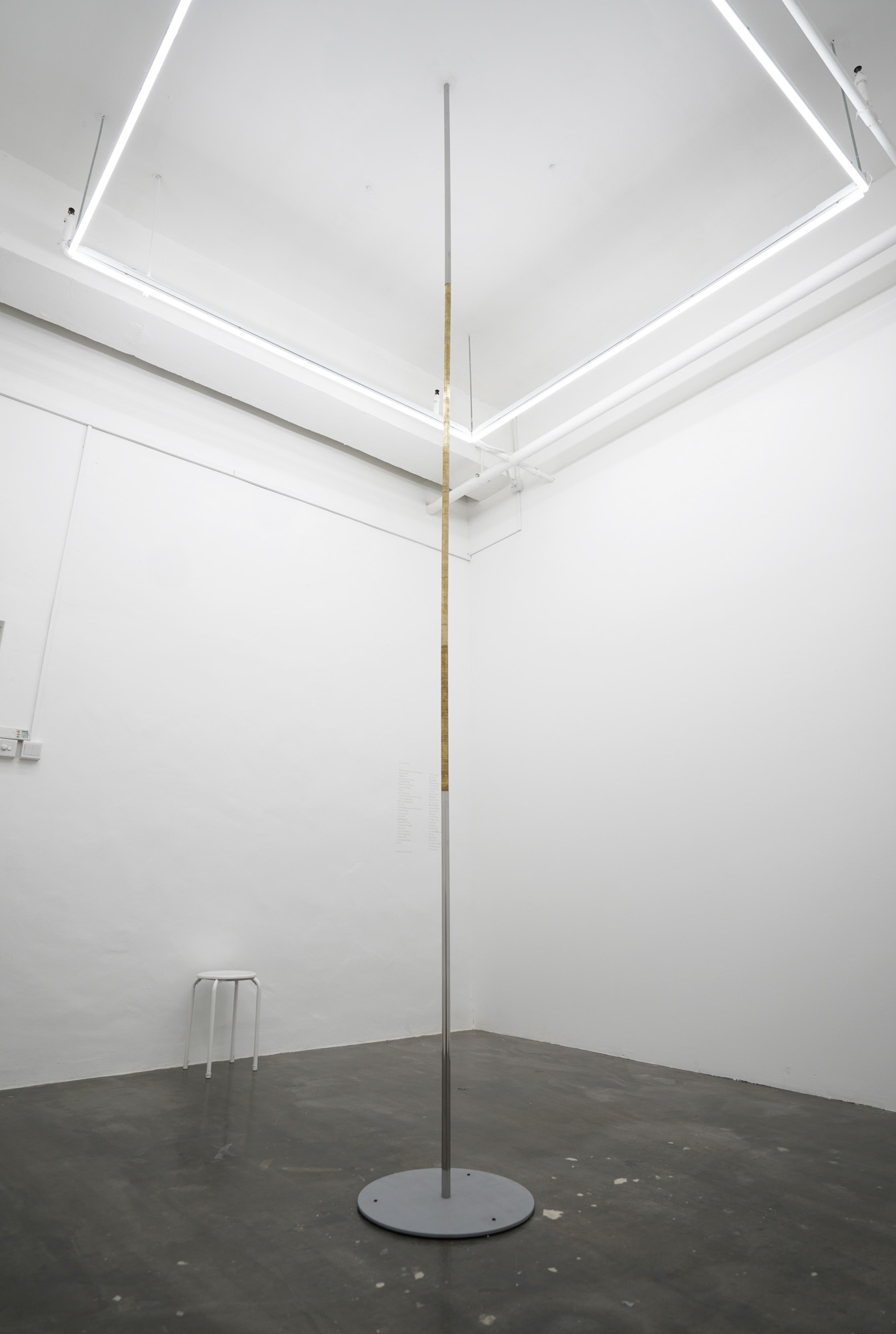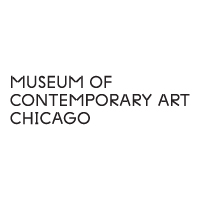Anthony Chin: “<s>S$1,996/</s> S$831.06/-”
By Louis Ho

ANTHONY CHIN
Anthony Chin’s latest work consists of an “unsuccessful art grant application, below-target donation drive result, $1 coins, adhesive, steel tubes.” Curated by Michael Lee at Singapore’s independent Comma Space, _-S$1,996/- S$831.06/-_ (2021) is a slim, streamlined column of more than 800 one-dollar Singapore coins precisely aligned between a pair of stainless steel rods that are attached to the floor and ceiling. The installation seems at first glance to be a minimalist monument to Mammon, but reveals itself, instead, to be a richly multivalent object that serves to foreground the often inescapable and sometimes insidious role of monetary capital in contemporary art- and exhibition-making.
The tale of how the piece came to be speaks volumes about the frequently mercurial state of financial sustainability in the art ecosystem. As the artist relates, “The project started with the need to submit a grant application for the needed funds to create a work and stage an exhibition . . . I decided to look at both the macro environment where eighty percent of all art funding in Singapore comes from the government, and how that in turn affects a single artist attempting to sustain a practice.” The application—in which Chin proposed to return his honorarium to the funding body—was unsuccessful. The artwork itself was realized through a crowdfunding drive that eventually raised SGD 831.06, which was translated into the titular number of one-dollar and one-cent coins, though only the former was utilized in the installation. The amount fell far short of the required SGD 1,996 that, according to Chin’s calculations, would have been needed in specie to erect a tower the exact height of Comma Space’s gallery. The exhibition, meanwhile, was staged with the aid of a donation from one private individual; these funds went toward various costs such as the physical set-up and marketing of the show, the publication of a catalogue etc. The installation is, finally, offered for acquisition at a sum that the artist hopes will at least allow him to compensate his collaborators fairly for their time and labor.

Detailed installation view of ANTHONY CHIN

Installation view of ANTHONY CHIN
The outcome of the project, then, as an experiment in determining the value of artistic and cultural labor, and, perhaps more interestingly, in testing the potential of alternatives to the current structures of public funding and private patronage that exist in Singapore, offers a less than optimistic prognosis. Amplifying this point is also the context of the exhibition site, the financial situation of which echoes the contingent, unpredictable realities suggested by Chin’s work. Comma Space, which began operations in 2020, is run by artist-curator Wang Ruobing and artist Chen Sai Hua Kuan out of an industrial building. As Wang observes, “In Singapore, [independent] activities are not easy to sustain due to limited funding sources, high running costs and scarcity of spaces.”
Beyond the critical eye that it casts on issues of financial sustainability, the implications of _-S$1,996/- S$831.06/-_ may also be understood within the history of the motif of money in the visual arts. The image of currency has long enjoyed mimetic representation, from its inclusion in Christ-cycle depictions of usury, to the rise of the mercantile class in the Dutch Golden Age and the visual culture of commodified excess, to the fascinating case of artists such as Victor Dubreuil, who, in the late 1800s, produced what would today be termed photorealistic depictions of American bills. It was only in the 20th century, however, that artists began to incorporate actual legal tender in their artwork. One of the more salient, recent examples is Hans-Peter Feldmann, who won the Hugo Boss Prize in 2010 and displayed the USD 100,000 prize money as used dollar notes tacked to the walls of the Solomon R. Guggenheim Museum in New York City. Chin’s installation belongs in that tradition of currency utilized as both medium and motif—a re-materialization of financial capital as a physical object, not just a two-dimensional image. To that end, “the decision to use real money came from wanting to use as direct a material as possible,” he states, “to express ideas around and about value.” Almost all currencies around the globe today are premised on government-backed fiat money, which lacks the intrinsic value of commodity money and possesses only exchange value, without use value. The abstraction of money into a fiat system has been further dematerialized with the rapid expansion of cryptocurrencies and blockchain technology and NFTs—the latter especially in the realm of art—and it is against these developments that Chin’s gesture of re-materialization may be read as symbolic resistance to the effects of capitalism, and its less salubrious facets, on the enterprise of art.

Screenshot of ANTHONY CHIN
According to Herbert Marcuse, art, in the bourgeois scheme of things, falls short of being an instrument of political and social emancipation, serving only to soothe the soul. He wrote of the “affirmative character” of bourgeois culture: “To the need of the isolated individual [affirmative culture] responds with general humanity, to bodily misery with the beauty of the soul, to external bondage with internal freedom, to brutal egoism with the duty of the realm of virtue.” Art remains but the objects of spiritual contemplation, promising only interior contentment and satisfaction of the needs of the psyche; this inner satisfaction does not demand a corresponding shift in the facts and the conditions of the external world, thus upholding the status quo. Here, by collapsing the circumstances of art-making into the act of making art itself—that is, by making art about the difficulties in making and showing art in a world that seems to undervalue such labor in the face of the logic of profit and the open market—Chin’s work is unabashedly un-affirmative, bringing the realm of labor, of material and economic relations, into the otherwise detached and ultimately inefficacious sphere of art.
Anthony Chin’s “_-S$1,996/- S$831.06/-_” is on view at Comma Space, Singapore, from July 31 to September 19, 2021.
%20x%20135(H)%20px-03Rc-72dpi%20(2).jpg)






